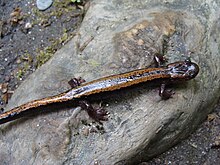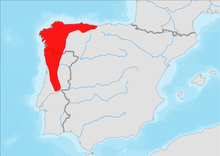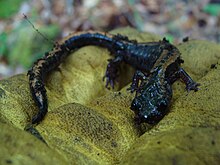
The Peneda-Gerês National Park, also known simply as Gerês, is a national park located in northern Portugal. Created in May 1971, it is the oldest protected area and the only national park in Portugal. It covers an area of 695.9 km2 (268.7 sq mi), occupying the Districts of Viana do Castelo, Braga, and Vila Real and bordering the Spanish Baixa Limia – Serra do Xurés natural park to the north, with which forms the UNESCO biosphere reserve of Gerês-Xurés.
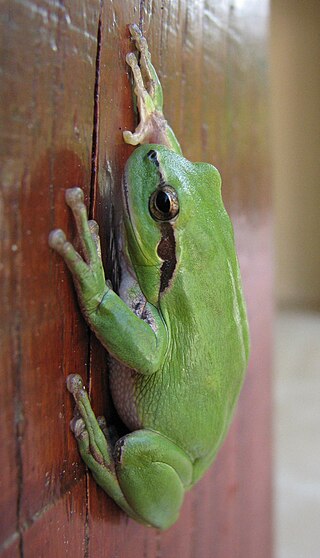
The Mediterranean tree frog, or stripeless tree frog, is a species of frog found in south-west Europe and north-west Africa. It resembles the European tree frog, but is larger, has longer hind legs, and the flank stripe only reaches to the front legs. The croaking resembles that of H. arborea, but it is deeper and slower.
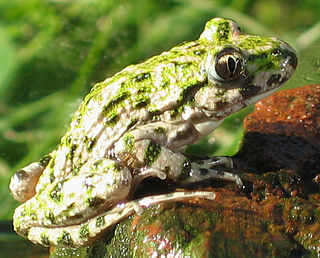
The common parsley frog is a species of frog in the genus Pelodytes. It lives in the Iberian region of southwestern Europe. Its earliest identification is believed to be from 1802.
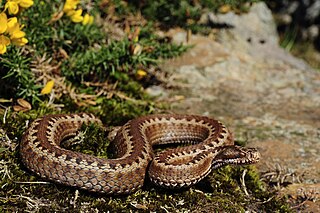
Vipera seoanei is a venomous viper species endemic to extreme southwestern France and the northern regions of Spain and Portugal. Two subspecies are currently recognized, including the nominate race described here.

The marbled newt is a mainly terrestrial newt native to western Europe. They are found in the Iberian Peninsula and France, where they typically inhabit mountainous areas.

The Caucasian salamander is a species of stream-dwelling salamander in the family Salamandridae. This is a salamander of medium size, with a thin, elongated body. It is a relict species, endemic to the south-western Caucasus, in Georgia and Turkey. The subspecies M. c. janashvilii is found at Mt. Mtirala near Batumi and probably along the Black Sea coast.

The North African fire salamander is a species of salamander in the family Salamandridae found in Algeria, Morocco, Ceuta, and possibly Tunisia. Its natural habitats are temperate forests, rivers, and caves. It is threatened by habitat loss.
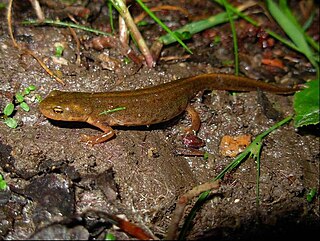
Boscá's newt, also known as the Iberian newt, is a species of newt in the family Salamandridae. The species is found in Portugal and western Spain.

The southern marbled newt or pygmy marbled newt is a species of salamander in the family Salamandridae. It is found in Portugal and Spain. Its natural habitats are temperate forests, Mediterranean-type shrubby vegetation, rivers, intermittent rivers, freshwater marshes, intermittent freshwater marshes, arable land, pastureland, rural gardens, water storage areas, ponds, open excavations, irrigated land, canals and ditches. It is threatened by habitat loss.
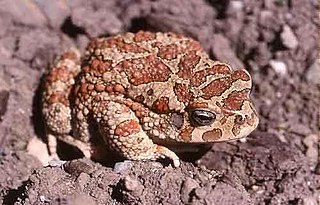
The Berber toad, also known as Mauritanian toad, Moroccan toad, pantherine toad or Moorish toad, is a species of toad in the family Bufonidae, which is found in north-western Africa, with an introduced population in southern Spain.

The Spanish painted frog, in Spanish sapillo pintojo meridional, is a species of frog in the family Alytidae. It is endemic to Spain.

The Iberian emerald lizard, also known commonly as Schreiber's green lizard, is a species of lizard in the family Lacertidae. The species is endemic to the Iberian Peninsula.

Bocage's wall lizard is a species of lizard in the family Lacertidae. The species is endemic to the Iberian Peninsula. Its natural habitats are temperate forests, temperate shrubland, Mediterranean-type shrubby vegetation, sandy shores, rural gardens, and urban areas. The IUCN does not consider it to be threatened.
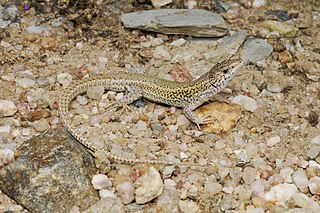
Podarcis carbonelli, commonly known as Carbonell's wall lizard, is a species of lizard in the family Lacertidae. The species is native to Portugal and Spain.

Psammodromus hispanicus, the Spanish psammodromus, is a species of lizard in the family Lacertidae. It is found in France, Portugal, and Spain. Its natural habitats are Mediterranean-type shrubby vegetation, temperate grassland, sandy shores, arable land, pastureland, and rural gardens. It is threatened by habitat loss.
